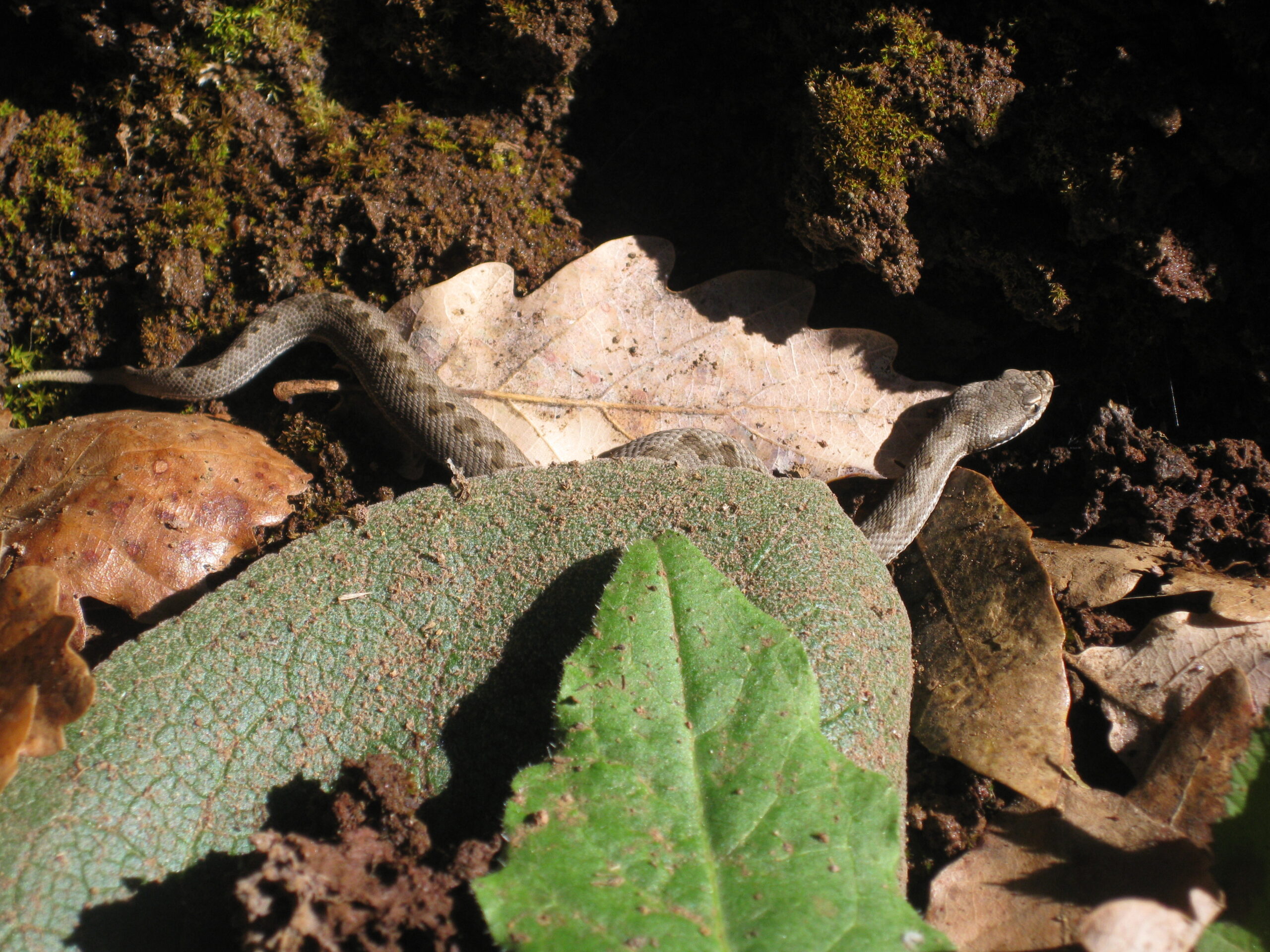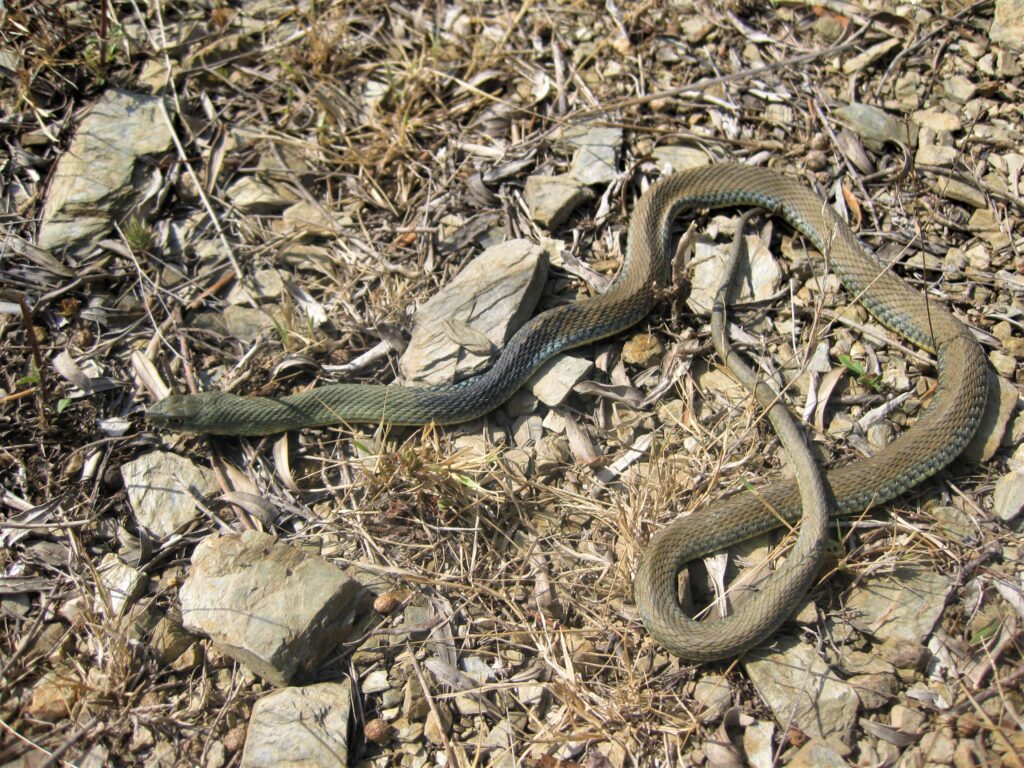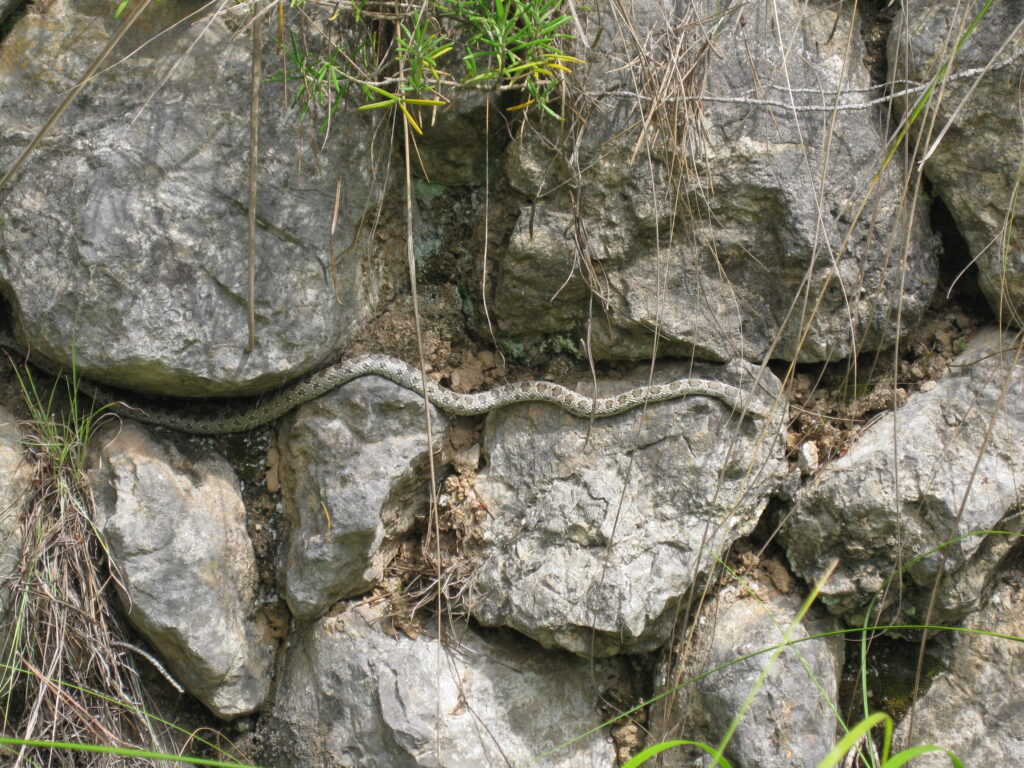Poisonous snakes in Spain

The devil in the form of a snake tempted Eve in Paradise, the Roman naturalist Pliny the Elder likened these reptiles to fire-breathing dragons that lived in faraway India, the jellyfish, which according to classical mythology turned everything it looked at into stone, had a mane made of snakes and the popular imagination associates these animals with witchcraft, malignity, the capacity for hypnosis (like the snake Kaa in The Jungle Book) or grants them mysterious healing powers.
But are snakes as bad as we have been led to believe and do they lie in wait for unwary humans? Evidently not, as we will see below, they are a very important cog in the wheel of ecosystems and if left undisturbed, they refuse our company.
Are all snake species poisonous? Of the 13 species that can be found on the Spanish mainland and the Balearic Islands, only 5 are poisonous. And of these 5, we will see that only the three species of vipers can cause us problems on our mountain forays.
Venom as a hunting strategy in snakes
Snakes are reptiles that prey on their prey in different ways. Some kill their prey by "biting" them and then suffocate them by constriction. This is the strategy of some Iberian snakes such as the southern smooth snake, the Aesculapian snake or the ladder snake. But others have developed more or less potent toxins to inoculate their prey and avoid chasing them or expending excessive energy to kill them. This is the case of the five venomous snakes we are going to see below:
In the first group we find two snakes that have "chosen" to have two fixed fangs at the back of their mouths connected to a venom gland. As they are snakes with a small jaw width, it is very difficult for them to inoculate a human with venom, but not impossible.
As the first representative of this group, we have the cogulla snake (Macroprotodon cucullatus). Between 35 and 50 cm in size, found in North Africa, more or less the southern half of the Iberian Peninsula, Mallorca and Menorca. It lives in soft Mediterranean soils where it digs galleries and feeds mainly on small reptiles, such as lizards.
And as the second representative we find the bastard snake (Malpolon monspessulanus). This is the largest Iberian reptile, reaching up to 200 cm in length. It is distributed throughout the Mediterranean basin and can be found in open land and herbaceous vegetation, scrubland, crops, rubbish dumps, forest margins... Females and juveniles are brown with white spots. Males are greenish with a characteristic black spot. It is a great predator in Mediterranean ecosystems and controls the populations of insects, reptiles, birds, rabbits... There have been some anecdotal cases of bites and subsequent inoculation of venom in humans.

But, without a doubt, the snakes with the most efficient venom and retractable fangs at the front of their mouths are the ones with the most efficient venom. vipers. In Spain we have three species. All three are small, between 50 and 80 cm, with a triangular head, a narrower "tail", a clear zigzag pattern on the back and a vertical pupil.
The first is the Seoane viper (Vipera seoanei), the only one that lives in more humid climates, is distributed in the north of Portugal and throughout the Cantabrian coast, Galicia, Asturias, Cantabria, the Basque Country, the north of Navarre and timidly enters the south-west of France. In the Cantabrian mountain range, it is found from sea level to 1900 metres above sea level and can be found in meadows, scrubland and forest edges. It feeds on amphibians, reptiles and rodents, being a great controller of its populations.
The second we will look at is the asp viper (Vipera aspis), with a European distribution, in Spain it can be found in the north of Catalonia and Aragon, Navarre, the Basque Country, Rioja and some provinces of Castile-Leon. It is the only species of venomous snake that can be found in the Pyrenees up to 3000 metres. If it bites us, there is no need to take a photo, let alone remove it from its environment for possible identification. It inhabits meadows, forests, abandoned crops, stony ground... It mainly feeds on micro-mammals.
And the third, the snub-nosed viper (Vipera latastei). Easily recognisable as it has a raised "snout" or "snout". It is distributed in the north of Africa and in the areas of the peninsula where the other two vipers are not present. Although there may be cases of reproduction between two species in contact zones, in biology this is known as "hybridisation". It is found from sea level to 3000 metres in the Sierra Nevada. It inhabits open land, walls, crops, forest margins... Juveniles eat lizards and small lizards, while adults prey on rodents and young birds.
It should be noted that the three species of snake usually give birth to their young in the summer months. The more "inexperienced" a snake is, the more easily it bites and we must not forget that although they are small, "they are bullies".
What to do if you encounter a snake?
It is not easy to come across an animal, let alone an elusive snake. If you frequent the mountains a lot, you may encounter them on the sides of roads, where they usually go out to hunt or on the roads where they regulate their body temperature. The basic advice is to avoid them, as they will usually do the same. Sometimes we can find them in the middle of the road and if we disturb them they will go into a defensive position, pretending to attack or "snorting" to scare us. If we look for a place to rest or sit on a stone, it is not a bad idea to lift it in case we find an animal underneath. In all cases, common sense rules.


What to do and not to do if you are bitten by a snake?
If we are unlucky enough to have been bitten by a viper, the first thing to do is to keep calm and relax the extremity where it has bitten us. Check if it has torn the skin with its fangs, a sign that it has inoculated the venom (sometimes they bite as a defence, but with the fangs retracted into the roof of the mouth). Do not run or move abruptly, as this would accelerate the spread of the toxin through the bloodstream. Disinfect the wound and get to a health centre as quickly as possible.
Will I have to be given an antiophidic serum? It will depend on many factors: your body mass in relation to the amount of poison injected, your state of health, your age (children because of their low body mass and older people are more sensitive to toxins), your hypersensitivity to poisons...
What I must not do (and I have seen many times on TV): do not suck the wound and then spit out the contents (not even with an unnecessary "suction device" that is on the market), do not cut or make incisions in the wound to remove the poison, do not bandage the wound (poisons inflame the tissues and bandages would be counterproductive). And as we have said before, do not capture or kill the snake, for later identification. If I have been bitten by a venomous snake in Spain, it is a viper.
Don't miss any adventure in the Pyrenees!

